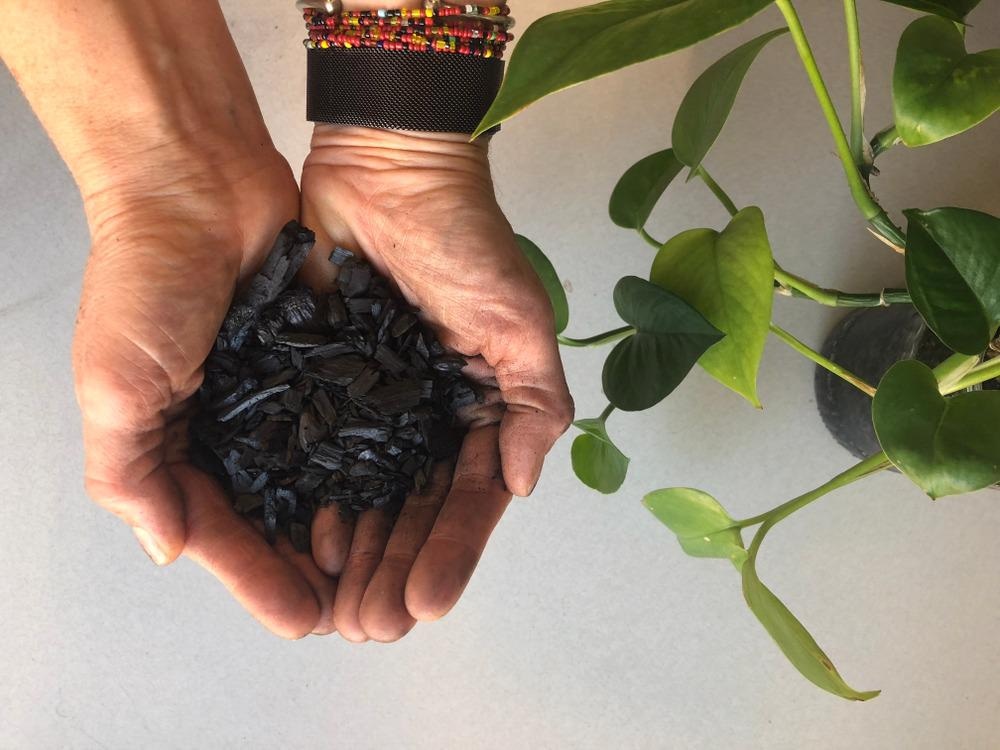
Image Credit: Sydney Schaaf/Shutterstock.com
Carbo Culture is a pioneering cleantech company addressing multiple environmental problems at once. Its CO2 removal technology reuses biomass that would otherwise be burned and creates a biochar product that can restore the planet’s precarious soil health without requiring vast amounts of energy.
Who is Carbo Culture?
Carbo Culture was founded in 2017 by CEO Henrietta Kekäläinen and CTO Christopher Carstens. The pair met at the prestigious Global Solutions Programme (GSP) from Singularity University and realized that their technical and commercial experience could be aligned with their shared focus on solutions for environmental problems.
Kekäläinen is an experienced entrepreneur with a background in technology education, based in Helsinki, Finland. She is a World Economic Forum Global Shaper and part of the Stanford University StartX community of founders.
Carstens is an inventor at heart and has applied his mechanical engineering background in multiple cleantech enterprises and positions. Based in California, US, Carstens still serves on numerous advisory boards, including the US Department of Energy’s Methane Hydrate B Advisory Committee.
How Does Carbo Culture’s Biochar Technology for Carbon Capture Work?
Carbo Culture’s carbon dioxide removal process begins with purchasing woody biomass waste from California's forest and agriculture industries. This already prevents environmental harm by removing a significant source of air pollution.
California has some of the worst air pollution in the United States. This is primarily caused by the fact that woody biomass waste is no longer sought out by the biomass energy industry, declining as renewable energy sources rise. Biomass waste, which was previously sold at US$ 50 per ton to energy providers, is now being openly burned across the state.
Carbo Culture then processes this biomass with a patented biochar technology for carbon capture. This CO2 removal technology works by depriving the woody biomass of heat and oxygen and applying pressure that produces charcoal. Charcoal produced in this way is referred to as biochar.
This carbon dioxide removal process, which produces biochar, accelerates the natural carbon cycle. Both methods sequester – or stabilize – the carbon in the biomass so that it cannot escape into the oceans or atmosphere, removing the risk of harmful CO2 emission.
But the difference in Carbo Culture’s biochar technology for carbon capture is that two-thirds of the carbon in biomass is sequestered in the process. In contrast, the natural carbon cycle only sequesters around 1% of biomass carbon.
One ton of biochar contains approximately three tons of CO2. Because this CO2 is sequestered in a stable carbon, it cannot be released into the atmosphere or oceans as gas or water.
Carbo Culture’s patented CO2 removal technology has minimal energy requirements. For years, this has been a critical challenge for carbon dioxide removal and sequestration, as many methods put forward have been prohibitively expensive in terms of energy and financial resources.
Such a cost- and energy-effective carbon dioxide removal results in a viable commercial enterprise. Carbo Culture is working closely with researchers and clients – and a global network of competing and cooperating biochar producers – to ensure biochar can achieve its varied potential for numerous applications.
Biochar Technology for Carbon Capture Can Help Save Soils
Biochar was first produced as a by-product of the biomass energy industry, and commercial applications for it are wide-ranging. It is rich in useful properties, including high conductivity, chemical activity, and a high surface area to mass ratio.
It is widely used in various applications to restore the complex and relatively little-understood ecological health of the planet’s soils. Soil is eroding at an alarming rate, with the United Nations recently stating the planet has only 60 harvests left in its soil. However, it should be noted that this often-repeated forecast is somewhat misleading, as it is not possible to calculate how many harvests are left in our soil due to the vast complexity of contributing factors.
There is scientific consensus that the deteriorating state of soils around the world is cause for alarm. One centimeter of topsoil takes a full millennium to develop naturally, and it is being lost at a much faster rate than this due to modern agriculture and development practices.
Chemically active biochar raises topsoil's pH level, which helps to stabilize nutrients that can otherwise be swept away in heavy rainfall. It can also be used in soil as a biofilter, preventing nutrients from leaving.
Biochar can add nutrients to soil as well, by helping to speed up composting processes. Not only this, but it can be used in bacterial processes for environmental remediation by removing toxins from soil.
Due to its high electrical conductivity, Carbon Culture biochar is a suitable material for microbial process enhancement – advancing soil’s important role in the carbon cycle.
Due to its high conductivity, biochar can be planted into root systems in urban landscaping to filter toxins out of stormwater and prevent runoff from polluting cities and industries. Applied in urban landscaping in this way, biochar also helps to create space for roots to grow by aerating the soil due to its high surface area.
Conclusion
Carbo Culture’s biochar technology carbon capture can succeed against multiple environmental and economic targets: carbon dioxide removal and sequestration, soil remediation, low energy output, reusing waste material, and making a profit at the same time.
The start-up company is already a biochar production leader and will continue to progress towards its ambitions in years to come.
References and Further Reading
Carbo Culture [Online] Available at: https://www.carboculture.com/
Garrigou, Anne-Sophie (2019) Biochar and Its Role In Mitigating Climate Change. [Online] The Beam.
Schlesinger, William H., and Jeffrey A. Andrews (2000) Soil Respiration and the Global Carbon Cycle. Biogeochemistry. https://doi.org/10.1023/a:1006247623877
Disclaimer: The views expressed here are those of the author expressed in their private capacity and do not necessarily represent the views of AZoM.com Limited T/A AZoNetwork the owner and operator of this website. This disclaimer forms part of the Terms and conditions of use of this website.